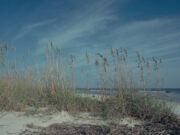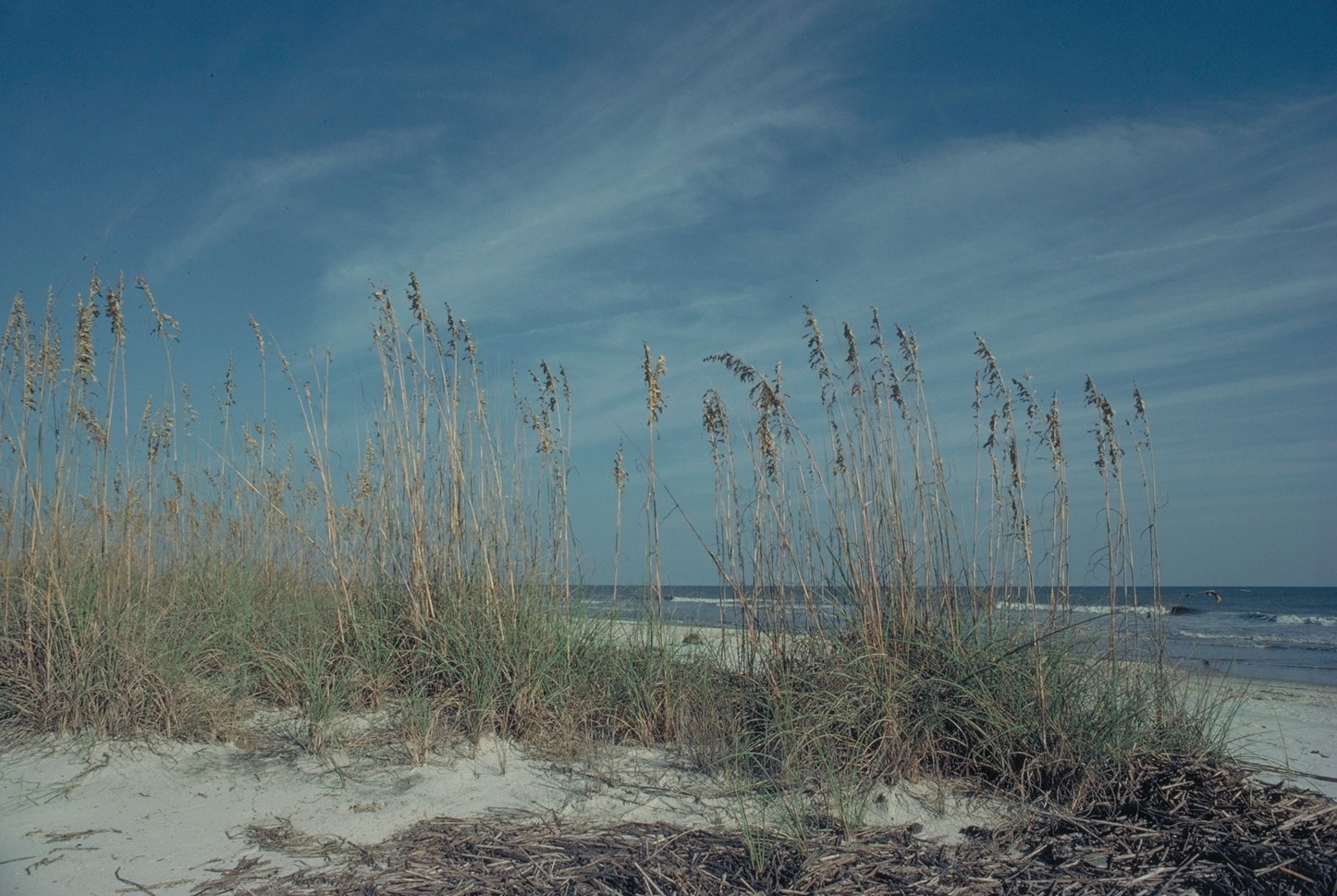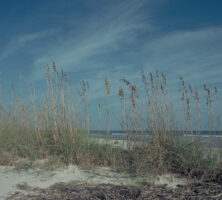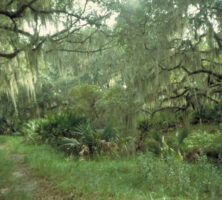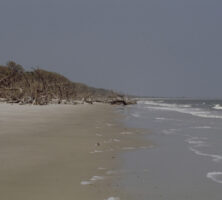The setting for generations of pirate lore and tales of buried treasure, coastal Georgia’s Blackbeard Island has had a compelling history for at least 200 years, including a period when it was the largest federal marine quarantine station on the south Atlantic coast.
The 5,618-acre island, northeast of Sapelo Island in McIntosh County, was named for Edward Teach, best known as “Blackbeard,” a pirate who conducted raids on merchant shipping in the region in the early eighteenth century. It was called Blackbeard Island as early as 1760, when the island was delineated as such on a survey map compiled by William DeBrahm and Henry Yonge. The legend that Teach buried his pirate loot on the island has persisted over the years, although no treasure has ever been found. Teach and his cohorts almost certainly frequented the area around the island. Tidewater Georgia, with its labyrinthine creeks, inlets, and secluded marsh islands, provided ideal cover for their illegal operations.

Courtesy of U.S. Fish and Wildlife Service
Blackbeard Island was owned by a consortium of French investors for eleven years beginning in 1789. In 1800 the island was sold at public auction to the U.S. Navy Department as a federal timber reserve. Live oak timber from the south Atlantic coastal islands was in heavy demand in the first half of the nineteenth century because of its suitability for the construction of wooden naval vessels. Public documents and personal accounts describe forays by northern shipbuilders to Blackbeard and other Georgia islands in search of the heavy, durable live oak timbers used in the framing of ships’ hulls. James Keen of Philadelphia made one such visit to Blackbeard in the winter of 1817-18. Keen kept a journal of the activities of his crew on the island.
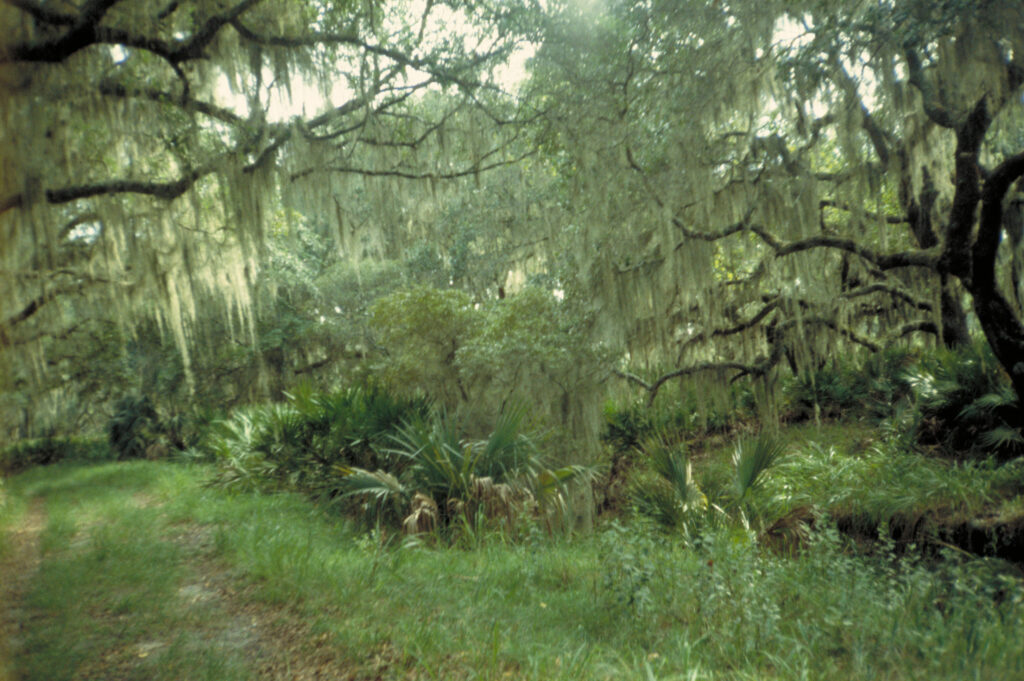
Courtesy of U.S. Fish and Wildlife Service
Except for occasional leasing by the federal government for cattle stocking, Blackbeard Island saw little further use until after the Civil War (1861-65). In 1880 the U.S. Marine Hospital Service opened the South Atlantic Quarantine Station at Blackbeard Island to monitor oceangoing shipping entering the Georgia ports of Savannah, Darien, and Brunswick. The quarantine station was built in response to the yellow fever epidemic of 1876, which claimed 1,000 lives in Savannah alone. Yellow fever, typically spread by mosquitoes, was usually introduced to the American mainland by ships arriving from tropical Caribbean waters. Vessels bound for U.S. southern Atlantic ports were required to report to Blackbeard for inspection and, if necessary, disinfection.
An 1894 Marine Hospital Service inspection report noted that the Blackbeard Island quarantine station comprised thirteen buildings and twenty-three employees. The report noted a surgeon’s hospital on the south end of Blackbeard. A launch, the Hygeia, was used to disinfect ships and their ballasts as well as to transfer people from the north and south ends of the island. There was an engineer to operate the launch and another in charge of the ballast removal and disinfecting station on the north end of the island. Other employees included a drayman, a carpenter, a stockman for the station’s small herd of cattle, a cook, a laundress, a head surgeon, an assistant surgeon, and a male nurse. The report noted that ninety vessels called at Blackbeard from foreign and domestic ports to undergo disinfecting and quarantine.

From Images from the History of the Public Health Service, by R. Kondratas
The disinfecting station, built on wharves extending into Sapelo Sound from Blackbeard’s north end, was composed of tanks and a rail track to expedite the removal of ballast stone from the holds of ships contaminated by yellow fever. In 1904 a brick crematory was built; it is the only structure from the quarantine era that still remains on Blackbeard Island. Marine hospital records do not note that this device was ever used for its intended purpose—to cremate the bodies of yellow fever victims.
The peak of the island’s activity as a quarantine station was reached in 1900, largely because of the processing of yellow pine timber from the numerous sawmills around nearby Darien. Beginning in 1889, Sapelo Sound, with its natural deep harbor, became the preferred anchorage for vessels engaged in the timber trade. By 1900 shipping around Blackbeard Island and Sapelo Sound began making a transition from wooden, sail-powered vessels to steamships designed to accommodate larger timber cargoes.
The Blackbeard quarantine station was deactivated in 1909, after vaccines developed by Walter Reed and others had practically eliminated yellow fever. In 1914 an executive order signed by U.S. president Woodrow Wilson made Blackbeard Island a wildlife preserve, and in 1924 the island was permanently established as a national wildlife refuge. Since then it has been managed and administered by the U.S. Fish and Wildlife Service of the Department of the Interior.
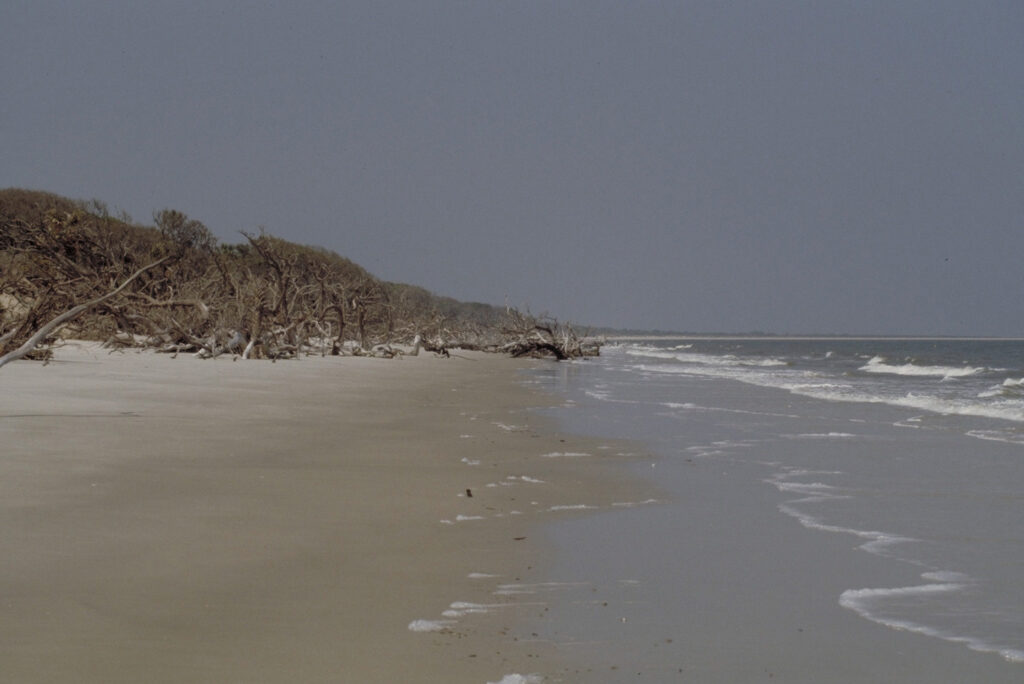
Courtesy of U.S. Fish and Wildlife Service


